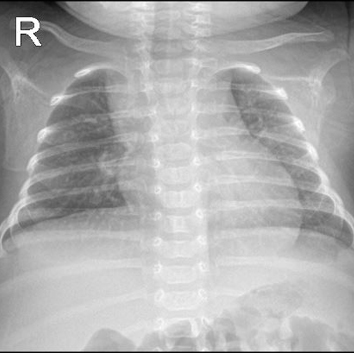Bullous urticaria in a 2-month-old girl with COVID-19.

Downloads
DOI:
https://doi.org/10.26326/2281-9649.31.3.2271How to Cite
Abstract
COVID-19 is an infectious disease caused by SARS-CoV-2 (Severe Acute Respiratory Syndrome Coronavirus 2). It is an RNA virus characterized by the presence on its surface of about 20 nm long projections formed by the glycoprotein S (from spike), which is an important protein for the attachment of the virus to the host cell.
COVID-19 was first described on December 31, 2019 in the city of Wuhan in China as nonspecific pneumonia of unknown cause and on March 11, 2020 it was classified as pandemic by the WHO. The first case of COVID-19 in Indonesia was identified on March 2, 2020 (1). COVID-19 affects any age but its course is generally mild in children and young adults (10).
The incidence of skin manifestations during COVID-19 varies according to the different Authors between 0.1 (8) and 20% (7) of cases. According to a large study conducted on an international register of cases from 31 nations (4), urticaria is among the skin manifestations induced by SARS-CoV-2 in third place by frequency after COVID feet and morbilliform rash; however, it is the manifestation that more than all the others coincides with full-blown disease (positivity to the nasopharyngeal swab).
According to the work of Daneshgaran et Al. (3), the average age of COVID patients with urticaria is 38.3 years and 59% of the cases are female. Urticaria has also been described in children with COVID-19. The earliest case was described by Morey-Olivé et Al. (5) in a two-month-old girl with COVID associated with generalized urticaria; another infantile case was described by Proietti et Al. (6) in a 6 month old baby without systemic and respiratory symptoms. In COVID patients, urticaria can occur before, during and after infection (3), but it occurs more frequently during than before or after.
Urticaria is a skin disease characterized by ephemeral erythema and edema of the skin and mucous membranes. The current patient, in addition to the classic urticarial manifestations, presented a 5 mm vesico-bullous lesion on the upper lip, which appeared on the same day as the urticarial lesions, making other causal hypotheses such as a sucking blister unlikely. The simultaneous onset of the vesico-bullous lesion and the erythematous-wheal lesions suggests the rare form of bullous urticaria.
The latter was described for the first time in the 1950s (9) but also recently a case has been described in a two-year-old girl (2). Bullous urticaria has been described above all in physical urticaria, but also in spontaneous urticaria (2). Bullous urticaria could be linked to an excessive release of inflammation factors, as shown by cases of bullous mastocytosis, which are more frequent where the mast cell infiltrate is massive. In the current case, a favoring factor may have been age, because it is known that bullous manifestations are more frequent in the neonatal period.
Urticaria is one of the most frequent skin manifestations in the patient with COVID-19 and is the one most frequently associated with full-blown infection with a positive nasopharyngeal swab. The current case of urticaria is described both for the early age of the patient suffering from COVID-19 and also for the exceptional presence of a vesicobullous lesion alongside the classic erythematous-wheal manifestations.
